GARRYANA EDITION 6
In Edition 6, Garry Oak comingles with both Brandy and Sherry casks. The Brandy gives a bright filter to the savory spice of Garry Oak. The Pedro Ximénez, its classic darker fruits with muted sweetness. Both add something distinct while leaving enough space for the Garry Oak to shine.
SPECIFICATIONS
TASTING NOTES:
Nose: Raspberry reduction, maple candy, dulce de leche, and a faint hint of clove.
Palate: Cedar, cinnamon, dried apricot, and light caramel.
CASK TYPES:
2nd Fill Ex-Pedro Ximénez Butt (65%)
Virgin Quercus garryana (25%)
1st Fill Ex-Calvados (5%)
1st Fill Ex-American Grape Brandy (2%)
1st Fill Ex-Washington Apple Brandy (3%)
CASK MATURATION TIMES: 41 Months
GRAIN BILL: Washington Select Pale Malt, Munich Malt, Extra Special Malt, Pale Chocolate Malt, Brown Malt
ABV: 50%
TOTAL BOTTLED: 5,922
FORMAT: 700ml

EXPLORING
GARRYANA
Enduring and stoic, Quercus garryana, the Pacific Northwest’s native oak, stands as a testament to terroir and perseverance. Its mighty trunk sheathed in thick, mossy bark. Its roots, like our roots, are dug deep into the earth of this place. Above, it towers steadfast and unmoving, but below is the persistent draw, the low churning hum of life and energy pulling up from the soil.
Garryana American Single Malt Whiskey pursues true provenance with the introduction of an entirely new species of oak to the world of whiskey. In our work, we create a record of the oak’s distinctive characteristics and reveal unique expressions of Pacific Northwest terroir.
CHARTING OAK
At Westland, we’re compelled to look out so that we might see possibilities others don’t recognize. But seeing opportunity is not enough. You have to have the wherewithal to do something about it.
Our native species of oak grows in a narrow band from southern BritishColumbia to the very northern reaches of California. In addition to its limited natural range, Garry Oak now grows in only five percent of its former habitat. Because this oak is so rare and so difficult to find, no system has been built for it. So we’ve had to create the supply chain from the ground up. Working closely with our forestry experts, mills, and coopers, we’ve been able to not only establish an economy around Garry Oak, but along the way begin to uncover its secrets.
With Garry Oak, we’re managing a resource that is, by its very nature, scarce—whether out in the world or in the aisles of our rackhouse. What we have to work with one year is altogether different the next. But this scarcity is ultimately what makes Garryana so challenging and thus so interesting to explore.
EXPLORE THE SERIES
GARRYANA EDITION 1
RELEASED JULY 2016
Releasing the first edition of Garryana now seems like a foregone conclusion, at the time however, we were just beginning to see its potential. All that came after began here.
GARRYANA EDITION 2
RELEASED JUNE 2017
Without an established economy in place for sourcing Quercus garryana we had to get creative, including how we it could be used with other whiskeys already aging in our rack house. Edition 2 is the result of that first foray.
GARRYANA EDITION 3
RELEASED SEPTEMBER 2018
The growing popularity of Garryana meant we had to revisit how to carefully manage our limited access to casks. The third edition exemplifies how Garry Oak can be used a finishing cask.
GARRYANA EDITION 4
RELEASED SEPTEMBER 2019
Encouraged by past successes, we set out to pair Quercus garryana with another larger than life flavor component—sherry casks. The resulting whiskey expanded our imagination for what future editions might hold
GARRYANA EDITION 5
RELEASED NOVEMBER 2020
Edition 5 was a return of sorts, offering the largest percentage of Quercus garryana used to date and more closely mirroring the inaugural release than other editions.

GARRY OAK RESTORATION PROJECT
The forecast called for snow, and Mother Nature made good on that promise as we headed to a Garry Oak savanna just outside Tacoma, Washington. We were there to help plant over 260 tree saplings with our friends and partners at Forterra, an organization dedicated to protecting and conserving land. While pursuing that mission, they build, create and foster communities around that land so that locals who live nearby are more connected to it.











